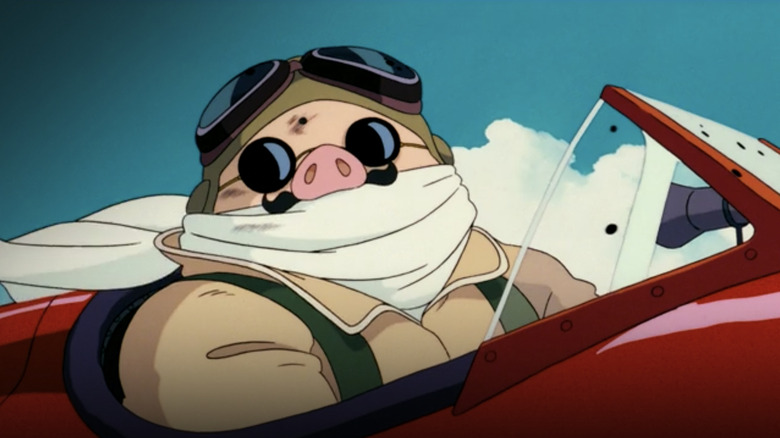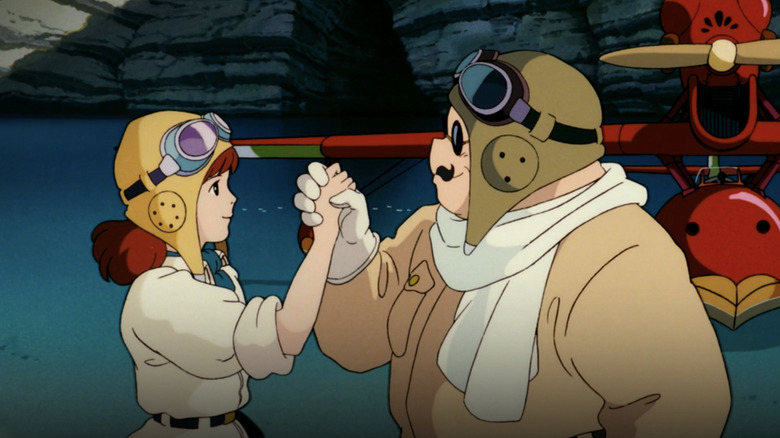Why Dubbing Studio Ghibli Films Can Be Challenging For Actors
The process of dubbing films from their original language to another is a tricky game to play. As an English speaker in the United States, I am of several minds about it. For one, there is the contingent of people who just refuse to watch a film in a foreign language because they will not read subtitles. Personally, I find dubbing done ol to satisfy these people to be deeply depressing. So when my dad becomes the most dad he can be and watches "Money Heist" on Netflix with English-language dubbing, all I can do is shake my head. Then again, there are a few instances where dubbing is immensely helpful. First, there are the visually impaired who are unable to read subtitles. Here, dubbing is completely acceptable, as they have every right to understand and enjoy the film as everyone else. Also, there are children whose facility with reading is not as adept as an adult's. Some words may be out of the grasp of younger viewers, or perhaps they just can't read fast enough to catch everything in the subtitles.
Anime has long been a constant source for English-speaking voice actors for work, basically since the global explosion of "Astro Boy" and "Speed Racer" in the 1960s. The thought of putting subtitles on your small '60s television was absurd, so dubbing immediately became commonplace for the medium, even if the vocal stylings used in a show like "Speed Racer" became an easy source for mockery. A lot of this dubbing work, though, was hastily put together, with not a lot of concern for properly translating Japanese to English in a way that both sounded plausible and matched the mouth movements of the characters.
This was even true of the English language dubs of the films of Hayao Miyazaki, one of the most celebrated filmmakers on the planet. That is until Miyazaki's Studio Ghibli started a partnership with Disney in the late 1990s with the release of "Princess Mononoke." Disney made the decision to bring in big name actors like Claire Danes and Billy Crudup for "Mononoke," as well as many veteran voiceover artists, put in the work to make the dubbing of these films a worthwhile option. They went so far as to create new dubs for all the Studio Ghibli movies before their partnership. It was a major endeavor, but unquestionably, this partnership and these dubs exposed the works of Miyazaki and his collaborators to millions. But crafting a successful dub is not easy, as the English language voice cast of "Porco Rosso" will tell you.
The technicality of performance
The original English-language dub for "Porco Rosso" was made by Japanese Airlines, naturally. It was not all that widely available, as you can probably expect. Disney's dub of the film came out and assembled a rather interesting cast. The titular pig pilot was played by Michael Keaton, the same year he made "Herbie: Fully Loaded" with Disney, putting on his best gruff, Humphrey Bogart-esque voice. The cast also included Cary Elwes, someone who is famously English, as the Texan Donald Curtis, "Father of the Bride" star Kimberly Williams-Paisley as Fio, and a cavalcade of stalwart voice actors, including Susan Egan ("Hercules"), David Ogden Stiers ("Beauty and the Beast"), Tom Kenny ("SpongeBob SquarePants"), and Pat Fraley ("Teenage Mutant Ninja Turtles").
In one of the DVD special features, the cast talk about the challenges of creating a dub that works technically with the already in place animation. Susan Egan said of the process, "Your mouth needs to open and shut at the same time that their mouth opens and shut, and all of that while doing some sort of performance that will capture their hearts," and sarcastically adds, "It's a cinch."
While voice performances are usually done before the actual animation is created, in order for the animators to cater to the voice, the opposite is the case here. Elwes remarked, "In a way, it's almost like I'm creating a character that's already been created. So there has to be a sense of respect for what's already been drawn." It takes a lot of fine tuning (and patience) from the actors and directors to find that sweet spot that allows all of these different elements to come together.
Whenever I decide to watch a film by Hayao Miyazaki or any other anime, I will always choose to watch the original version, in Japanese with English subtitles, unless the dubbed version is the only one available to me. I want to be able to get as close to the experience of watching the intended film as possible. But for those that opt to take in the English-language dubs, at least you can know a lot of hard work was put into making those tracks enjoyable and fit for the films they accompany. Dubs are at least worth it to get a line like this from Susan Egan in the recording studio: "Okay. It takes place in Italy. It was originally in Japanese. Now it's in English, but she sings in French."

